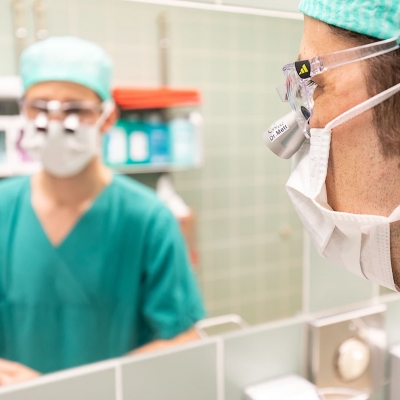Burn Center

We provide state-of-the-art surgical care for patients who have sustained burn injuries. We work closely with the Department of Anesthesia & Critical Care to treat acute burns. For complex wounds as well as burn scars and deformities our reconstructive plastic surgery service provides all necessary treatment.
- First aid in burns
- Admission criteria for burns
- First care and therapy
- Skin substitutes
- Aftercare
- Research
- Burns in children
- Burn care support groups
- Posttraumatic stress disorder (PTSD) therapy
- Primary and secondary reconstruction